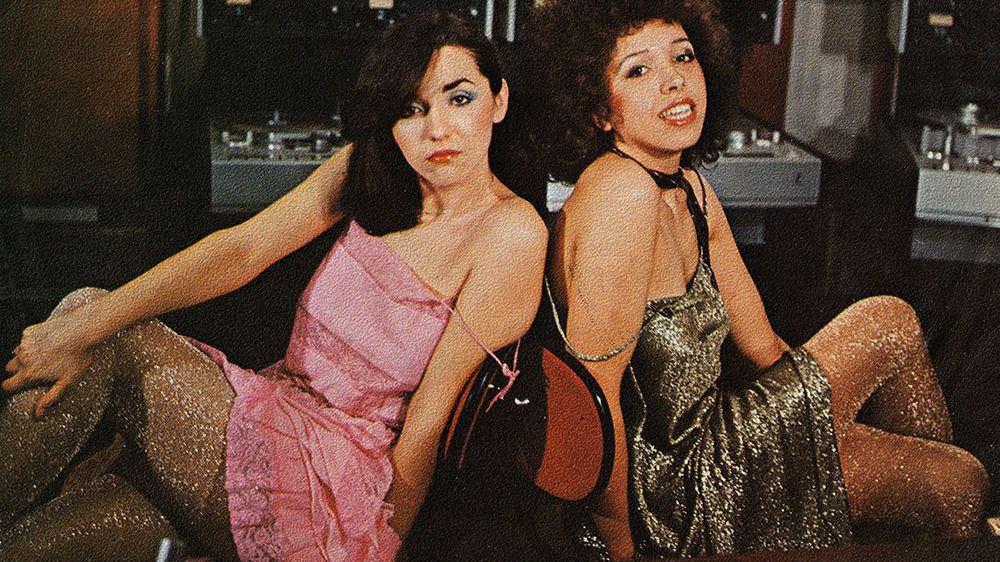Dancing Behind Yugoslavia’s Velvet Curtain

One might ask why there aren't very many disco albums from the former Yugoslavia. There is not one definitive answer, because disco was certainly big in the region, as it was in the rest of the world. Fox & His Friends label owners Leri Ahel and Zeljko Luketic have a list with hundreds of recordings, but only a few can be drawn from LPs; the others are mostly taken from hard-to-find 7"s or performances at various festivals or television occasions. Some are hidden deep in the realm of non-genre B-sides, or just make curious fillers on otherwise completely different – let’s say funk, rock or pop – albums. Most ex-Yu disco albums – some featured in this previous article – are common knowledge in vinyl collectors' circles. Discogs and eBay prices can prove that.
Ahel explains that the real world of Yugoslavian disco was found in numerous 7’’ releases, the preferred format of large self-managing companies like Jugoton in Zagreb, PGP RTB in Belgrade, Diskoton in Sarajevo and ZKP RTL in Ljubljana. They weren’t sure what to do with the new disco craze: prog-rock was dead, punk was happening and new wave kids quickly established themselves as the most interesting. The opposite was the world of pop music, even German-influenced Schlager crooners or the huge folk music scene. So the labels constantly probed the market with limited runs of disco tunes on a single format. It was less expensive than to do a whole album, which was reserved for experienced chart toppers or musicians who already succeeded elsewhere. Singles were easier to release and distribute than albums, but also easier to forget if they miraculously flopped.
Music critics in large papers and magazines came from rock backgrounds. They hated the new club-oriented music with bizarre lyrics, strings larger than life and performers flaunting their overt sexuality. Disco was also not cool to the punks by definition. As the tight linguistics of the music press always considered it to be just cheesy dance music, the future of the genre in Yugoslavia was not bright. Of course, Disco Demolition Night already took place in America and careers were lost under that music tagline. Somehow disco was over and nobody wanted anything to do with it. But as musicians like Nile Rodgers now say, it remained alive in several other styles like boogie or just dance music, which later morphed into house and techno and virtually anything you can move your ass to. Disco was always there and it stays in various disguises.
Recent interest among music lovers and collectors is not just another trip down memory lane, Ahel explains, it’s mostly connecting to and learning about the roots of modern dance music. After the breakup of Yugoslavia, especially in Croatia, music historians did not bother to dig deeper in the past. They still consider new wave, punk and mainstream rock to be the main flags of ex-Yu music. Electronic music is forgotten and disco was probably mentioned as a odd and trashy escapade of commercial pop. Industrial, EBM or synth-pop… you don’t want to go there, they probably thought. But disco in Yugoslavia was hardly an underground movement that you can easily forget – the productions were huge and elaborate, and strings and rhythm sections were sometimes done by big orchestras or famous ensembles. The big pop stars such as Gabi Novak, Ljupka Dimitrovska and Zdenka Vuckovic did experiment with it, and there also were younger performers like Moni Kovacic, Dubravka Jusic and Milka Lenac who combined it with their stunning looks and glitzy outfits.
Leri and Zeljko decided to go for that uncharted world of 7’’ singles, B-sides and rare versions for the first instalment of their new compilation, Socialist Disco. Dancing Behind Yugoslavia's Velvet Curtain 1977-1987. They included musicians such as Macedonian-born disco star Arian (with the only track that does not appear on his sought after Arian album), legendary Kire Mitrev’s outfit KIM, famous composer Alfi Kabiljo with his collaboration with Krunoslav Slabinac and two tracks in Nenad Vilovic production – a Split born maestro here with his ST Group and another with, surprisingly, Yugoslavian soccer player Ivica Surjak.
Footballers singing disco are not the only part of the musical and cultural phenomena that Socialist Disco wants to explore. There is Miss Yugoslavia for Miss World 1982, the stunning Ana Sasso with her rare Italo disco track; Slovenian Moni Kovacic who was one of the most liked pin-ups in ex-Yu with her photo spread in Start Magazine (a Yugoslavian version of Playboy who used ex-Croatian Prime Minister Ivo Sanader as an naked photographs dealer); and Rok Hotel with their ‘Disko’ stomper that the DFA guys would certainly approve of. Rok Hotel were two singers from Mirzino jato (the most commercial Yugoslavian disco act made to look and sound like Boney M), Gordana Ivandic and Zumreta Midzic, first one sister of Ipe Ivandic the drummer from Bijelo dugme, while the second one still performs as Zuzi Zu. Bizarre lyrics section is topped with a Yugoslavian cover of a hit song 'Vamos A La Playa', but in this version with mutants and robots playing on a beach in a nuclear summer. Covers that you might find interesting are Zdenka Vuckovic’s ‘Ja cu prezivjeti’, disco-orchestra version of a queer-disco classic ‘I will survive’ and Elvira Voca, mainstream pop star doing her take on Kim Wilde’s ‘The Second Time’.
The tracklist goes to 18 entries in total, carefully remastered from the original studio tapes, with some titles premiered for the first time on wax. And If you ask for a certain track that you would like to hear remastered and pressed in all its glory, remember that it can easily take its place on Socialist Disco 2. In the meantime, just dance to the Non-Alignment, free border sound of Yugoslavian disco.
Order Socialist Disco. Dancing Behind Yugoslavia's Velvet Curtain 1977-1987 right here.


















Must Reads
David Holmes – Humanity As An Act Of Resistance in three chapters
As a nation, the Irish have always had a profound relationship with the people of Palestine
Rotterdam – A City which Bounces Back
The Dutch city is in a state of constant revival
Going Remote.
Home swapping as a lifestyle choice
Trending track
Vels d’Èter
Glass Isle
Shop NowDreaming
Timothy Clerkin
Shop Now